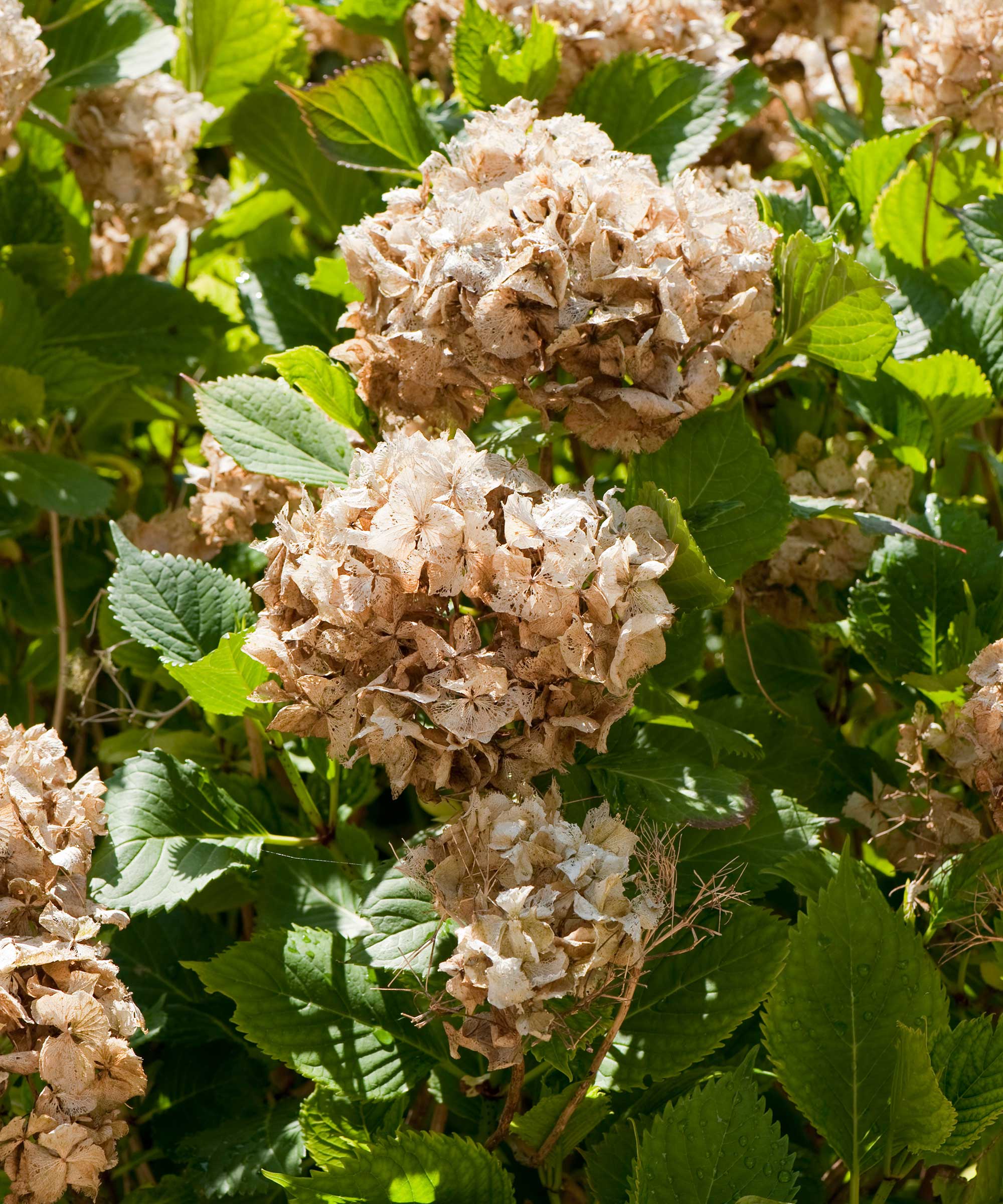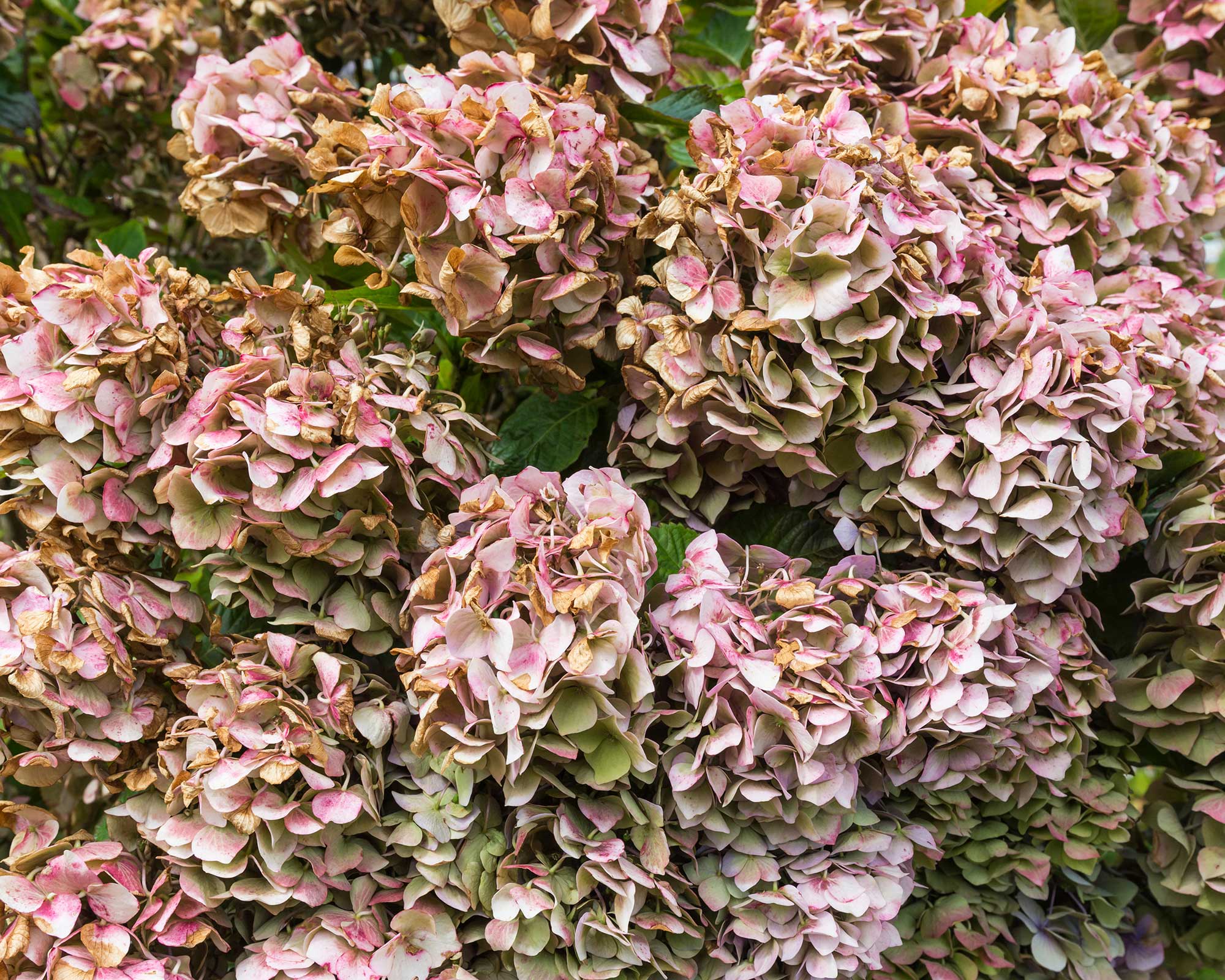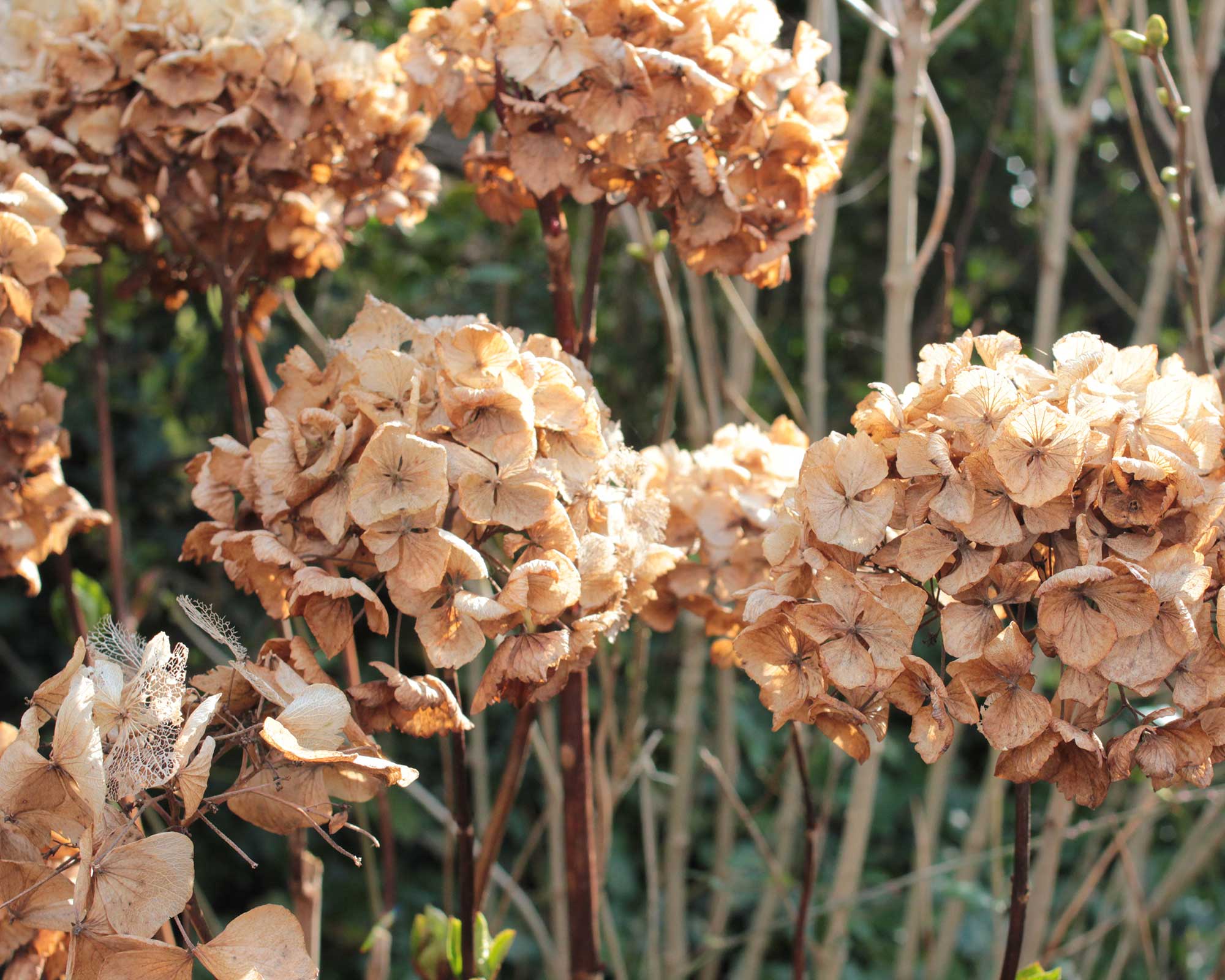Should I deadhead hydrangeas? We explain what to do when the blooms fade
Our guide reveals all there is to know about deadheading hydrangeas so you can keep your shrubs looking beautiful for longer


Deadheading hydrangeas is an easy and satisfying garden job that instantly improves their appearance.
These structural shrubs are renowned for their giant, fluffy heads of blooms. Hydrangea care is also generally unfussy, so they make fabulous garden staples, whether that's in a large border, planted in a pot, or to brighten up a shaded corner. But once those blooms pass their peak, they turn brown and withered, and the plants can quickly go from looking lovely to lackluster.
We explain how to neaten up the look of your hydrangea throughout the flowering season. But that's not the only benefit of deadheading hydrangeas – doing so will also allow the plants to grow stronger and encourage better blooms to form later on.

Deadhead old blooms of your hydrangeas or leave them on for winter interest
4 simple steps for deadheading hydrangeas
Deadheading flowers always improves the look of garden displays while allowing the plant to channel its energy into making better blooms and growing strongly.
With hydrangeas, it's super straightforward – just follow these steps:
- Take your best secateurs or, for larger shrubs, garden pruners. Ensure they are sharp and clean so as not to damage the plant.
- Locate the hydrangea flowers that have passed their best – their color will have faded and become tinged with brown, and the petals will have shriveled.
- Remove the faded blooms with an inch of stem, says Christine Walkden, a gardening expert from Amateur Gardening magazine. This is so that you do not prune out potential flower buds which are developing immediately beneath them, she adds.
- At the same time, you can remove any weak or dead stems that are crowding the middle of the bush, says John Negus, also from Amateur Gardening. 'Provided the remaining shoots are strong and healthy and air can pass freely between them, there is nothing else to do.'

Be careful not to remove the buds of new flowers when deadheading hydrangeas
When is the best time for deadheading hydrangeas?
Similarly to deadheading geraniums, if you live in a warm climate, you can deadhead hydrangeas throughout the flowering season. Start deadheading as soon as the first flowers fade, then continue as and when your shrub needs a tidy-up.
In colder regions, some gardeners choose to skip deadheading mophead varieties of hydrangeas entirely. Leaving flowers on over winter helps protect the plants from frost, as it shelters the buds.
Lacecap varieties are hardier, so there is less risk in deadheading them freely in colder areas. But, whatever your approach and variety of plants, it's generally wise to stop deadheading hydrangeas in early fall.
What's more, leaving the blooms to dry on the plant over winter will add sculptural interest to the garden – especially if accompanied by some of the best plants for seed heads in nearby pots or borders. These can be snipped away the following spring, when you prune your hydrangeas.

Leaving the flower heads on will protect the plants from winter temperatures

The garden was always a big part of Holly's life growing up, as was the surrounding New Forest where she lived. Her appreciation for the great outdoors has only grown since then. She's been an allotment keeper, a professional gardener, and a botanical illustrator – plants are her passion.
